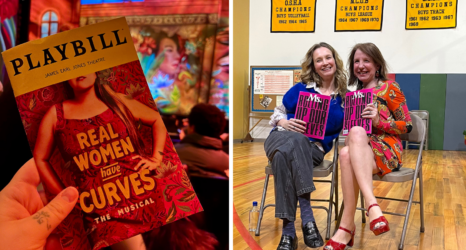Marcia Tucker, founder of the New Museum in New York City, recalled her interview for her previous curatorial job at the Whitney Museum of American Art in 1969 thusly:
I said ‘Let me tell you why you don’t want to hire a woman. First, no man will ever be able to work for me. Second, we know that women can’t do budgets, and third, once a month I’ll go crazy.’
Luckily, the president of the Whitney laughed, and Tucker was hired as the first female curator at the museum, albeit at a rate one-third less than a male curator hired the same day.
When she found out she was making less, Tucker, who died in 2006, marched into the president’s office and asked why. “And he said, ‘the budget, the budget, the budget,” she said. “And I said ‘The New York Times, The Daily News, The New York Post.'”
Such are the all-too-recent and yet often forgotten tales of pioneering women in the art world, chronicled in Lynn Hershman Leeson’s new film !Women Art Revolution, which opens in New York at the IFC Center on June 1. Hershman Leeson’s fourth film, it was an official selection for both the Sundance and the Toronto International Film Festivals.
Set to a score by Sleater-Kinney’s (and Portlandia‘s) Carrie Brownstein, the film documents the “secret history” of feminist art, from Kate Millet’s Sexual Politics to Judy Chicago’s “Dinner Party” to the Guerrilla Girls’ provocative billboards. It shows the movement building steam, making headlines and then fracturing under the sorts of pressures that any truly revolutionary movement will. Judy Chicago emerges as a controversial figure: loud, demanding and unyielding, for better and for worse.
The film’s most poignant moment is Sheila Levrant de Bretteville’s heartfelt recollection of her time at the Woman’s Building, a feminist art space founded in downtown Los Angeles in 1973 by Judy Chicago, Arlene Raven and herself. Now the Caroline M. Street Professor of Graphic Design at Yale University’s School of Art (and the first woman to receive tenure there, in 1990) de Bretteville breaks down recalling not just the lack of representation female artists of her generation experienced, but where they felt an even more fundamental deficit: money. “We were unable to do the things we wanted to do,” she says through tears.
The film reminds us that just 30 years ago performance art was a revolution unto itself– jarringly feminist, queer or both. Martha Rosler’s “Semiotics of the Kitchen” and other performance art pieces capture the reaction to what feminists of the 70s saw as minimalism’s cold masculinity. Much of the performance work of artists Carolee Schneemann, Eleanor Antin and Hershman Leeson herself does more than re-appropriate the body, it makes it both the tool of the work and the work itself. It’s easy to forget how early performance art was an implicit critique of minimalist artists’ detachment from the body, the concerns of which were those of many women. And somehow the Roslers and Schneemans are often steamrolled in the collective memory by their “higher art” male contemporaries, the Vito Acconcis and Tim Millers.
But the film also shows how such a broadly felt ideological movement can fail in the face of crisis, and the inherent difficulty critiquing something of which you are a part. In 1985, when Cuban artist Ana Mendieta fell out of a 34th story window–with many wondering about the involvement of her husband, minimalist sculptor Carl Andre–even the Guerrilla Girls (a band of women who wear gorilla suits in interviews and issue commentary on the gender inequities of the art world) could not put together a cogent response. The art world was too closely woven for any deep criticism of the tragedy from within.
Women Art Revolution is a record, not a paean, to the strides of women in art during the director’s lifetime. It is fiercely self-aware, highlighting its own limits and constantly reminding the viewer that the narrative is a personal one. Hershman Leeson did see these changes firsthand, and has every right to relate her story as a history. But maybe that’s not what she wanted–after all, that’s what a man would do.
Check here to see where the film will be playing this summer.





